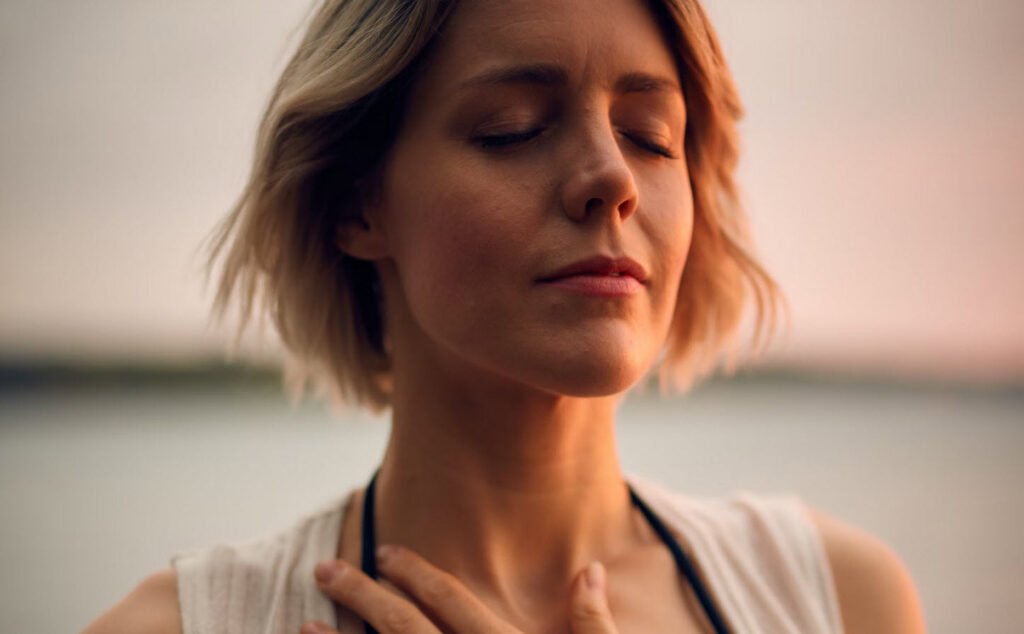
Respiration, the process by which organisms exchange gases with their environment, is vital for the sustenance of life. In humans, respiration involves the mechanical movements of the lungs and the thoracic cavity. The thorax, commonly referred to as “the chest,” plays a crucial role in these respiratory movements, housing the lungs and heart and being bounded by the spinal column, ribs with cartilages, and the breastbone.
The mechanics of respiration are made possible by two key elements: the elastic movements of the lungs and the activities of the sides and bottom of the thoracic cavity. The lungs, which act like sponges, expand and contract, creating changes in pressure that facilitate the inhalation and exhalation of air. The thoracic cavity, encompassing the space between the neck and abdomen, provides the necessary enclosure for these respiratory actions.
Let us delve into the four methods of respiration as classified by the Yogis:
1. High Breathing:
High breathing primarily involves the use of the upper portion of the lungs. In this method, individuals tend to breathe shallowly, with the air reaching only the upper regions of the lungs.
High breathing is often associated with stress and anxiety, as shallow breaths are a common response to heightened emotional states. However, this method of respiration does not efficiently utilize the entire lung capacity, resulting in a lower intake of oxygen and decreased efficiency of the respiratory process.
2. Mid Breathing:
The mid breathing technique engages the middle portion of the lungs. This method allows for a more moderate and balanced distribution of air within the lung space.
Mid breathing is observed in individuals who have developed a healthier and more natural pattern of respiration. Although better than high breathing, mid breathing still falls short of utilizing the full lung capacity, and thus, it may not provide the optimal intake of oxygen required for optimal bodily functions.
3. Low Breathing:
Low breathing involves the use of the lower portion of the lungs. This technique allows air to penetrate deeply into the base of the lungs, where a significant portion of blood vessels and air sacs reside. By employing low breathing, individuals can maximize their lung capacity and enhance oxygen intake. As a result, this method of respiration is considered more beneficial for overall health and well-being.
4. Yogi Complete Breathing:
Yogi Complete Breathing is a comprehensive and advanced form of respiration, incorporating all the previous methods. It focuses on engaging the entire lung capacity, from the upper to the lower regions, thereby achieving the most efficient and beneficial results.
Yogi Complete Breathing is a skill that can be mastered through practice and conscious control of the respiratory muscles. By employing this technique, individuals can not only increase their oxygen intake but also promote relaxation, reduce stress, and enhance physical and mental well-being.
In conclusion,
Respiration is a fundamental aspect of life that sustains our existence by facilitating the exchange of vital gases. The four methods of respiration—High Breathing, Mid Breathing, Low Breathing, and Yogi Complete Breathing—represent varying levels of efficiency and utilization of lung capacity.
While High Breathing and Mid Breathing are common patterns observed in many individuals, they may not provide the optimal benefits for health and vitality.
On the other hand, Low Breathing and Yogi Complete Breathing offer more profound advantages by allowing for deeper oxygen intake and promoting a harmonious balance within the body and mind. By understanding and mastering these different methods of respiration, individuals can take control of their well-being and enhance their overall quality of life.
You may also like:- Forward Fold Yoga – Embrace Spinal Release and Flexibility
- Helpful Tips For Practicing Lizard Pose Yoga
- 3 Ways to Exercise on a Busy Schedule
- Top Ten Tips for a Great Yoga Practice
- 100 Best Yoga Books – Free Download
- Using Yoga for Weight Loss – Balancing Body and Mind
- Kapalabhati – A Breathing Exercise for Holistic Well-being
- 7 Killer Ways to Maximize Fat Burning in the Gym
- Improving Blood Circulation in Your Legs – Simple Exercises for Better Leg Health
- Long-Term Effects of Exercise on the Muscular System








